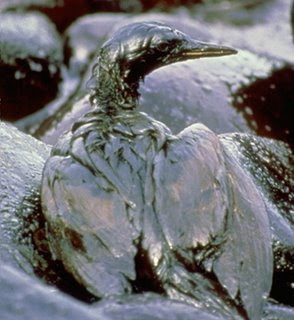 Students can explore ancient city ruins; recreate the expansion of the Roman Empire; measure distances between landmarks; get directions; calculate the area of the base of the pyramids; track the movements of refugees from Sri Lanka; highlight significant places and events from a text/film; create layers showing the growth of Melbourne; use placemarks, descriptions and images to show a recent holiday trip, etc. The list is literally endless.
Students can explore ancient city ruins; recreate the expansion of the Roman Empire; measure distances between landmarks; get directions; calculate the area of the base of the pyramids; track the movements of refugees from Sri Lanka; highlight significant places and events from a text/film; create layers showing the growth of Melbourne; use placemarks, descriptions and images to show a recent holiday trip, etc. The list is literally endless.Assignment 2: Virtual Learning Environment (VLE)
 Students can explore ancient city ruins; recreate the expansion of the Roman Empire; measure distances between landmarks; get directions; calculate the area of the base of the pyramids; track the movements of refugees from Sri Lanka; highlight significant places and events from a text/film; create layers showing the growth of Melbourne; use placemarks, descriptions and images to show a recent holiday trip, etc. The list is literally endless.
Students can explore ancient city ruins; recreate the expansion of the Roman Empire; measure distances between landmarks; get directions; calculate the area of the base of the pyramids; track the movements of refugees from Sri Lanka; highlight significant places and events from a text/film; create layers showing the growth of Melbourne; use placemarks, descriptions and images to show a recent holiday trip, etc. The list is literally endless.The Importance of Spatial Awareness
Even though we navigate daily through a perceptual world of three dimensions and reason occasionally about higher dimensional arenas with ease, the world portrayed on our information displays is caught up in the two-dimensionality of the endless flatland of paper and video screen.
The problem of spatial perception does not end with the experience, but is continued in the ability to understand and communicate ideas of three-dimensional space in two dimensions. The use of digital technology in the classroom offers the opportunity to both develop spatial awareness and develop methods to communicate spatial concepts necessary for understanding the visual information within children's minds (Everett, 2000; Hermer-Vazques, Moffet, & Munkholm, 2001). The nature of the information created to communicate three-dimensional spatial ideas bridges science and art, physical space, and cyberspace.'
Matthews, David (2002), Technological applications to support children's development of spatial awareness, Information Technology in Childhood Education Annual, p.321
Note: the text above is not my work. It has been adapted from the reference.
Once you have finished looking through this blog, reflect on the following questions: Can Google Earth play a role in the development of spatial awareness? Can the ideas and concepts created in Google Earth 'bridge' science and art, physical space and cyberspace? Is spatial awareness important?
The Importance of Global Education
Abstract of an interview about the importance of 'global education' taken from this site.
'Global education has significantly increased in importance and prominence in K-12 education over the last two decades. Not only are students learning about the world through new technologies, they are also interacting with it. Being fully immersed in the twenty-first century has placed new importance on understanding cultures other than our own. New technologies are placing distant peoples only clicks away.
In an email interview with Dr. Merry Merryfield, one of the foremost scholars in the field of Global Education, I asked her to address what it takes to offer a truly global education and why it is important.
Brian Knighten: Can you define "global education"?
Merry Merryfield: Global education prepares young people to understand and interact within a culturally diverse and globally interconnected world. Its content includes the study of world cultures and religions, world literature, the interrelatedness of world history, global issues, global economic, technological, environmental, and political systems, non-state global actors, and cross-cultural communication skills.'
After completing the task and browsing this blog, come back here and reflect on the following question: in what ways can Google Earth help 'prepare young people to understand and interact within a culturally diverse and globally interconnected world?'
Task
- Three locations with placemarks
- A brief written description of each location with an image (taken from the internet)
- Audio
- Saving the tour to hard-drive
- Uploading the tour using Google Docs
- The tour will be put through a 'gadget' in order to get the html code which will enable the tour to be embedded on a web page (such as this blog)
I have made Jing clips which cover each step of the task. I expect this task to take a couple of hours.
Before starting the task, you need to go here to download the lastest version of Google Earth (its free). There are several tools and functions that this version of Google Earth has to offer, including: navigating, directions, layers, places, measuring and site-seeing. All of these tools are easy to use and can be effectively used in a lesson for almost any subject.
The next post is an introduction to the basics of Google Earth through a YouTube clip. To see this post click here or click on the Basics of Google Earth page at the top left corner of this blog.


